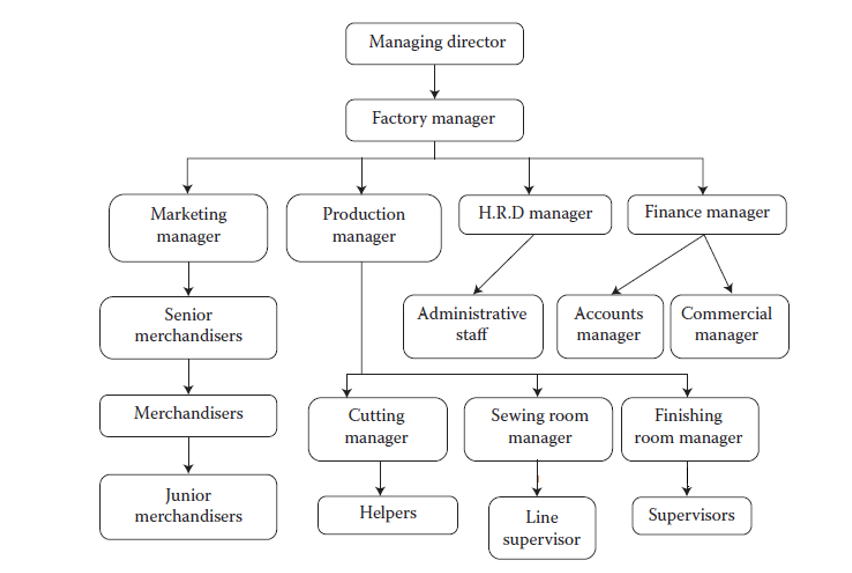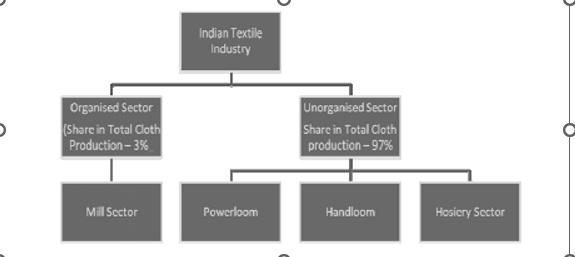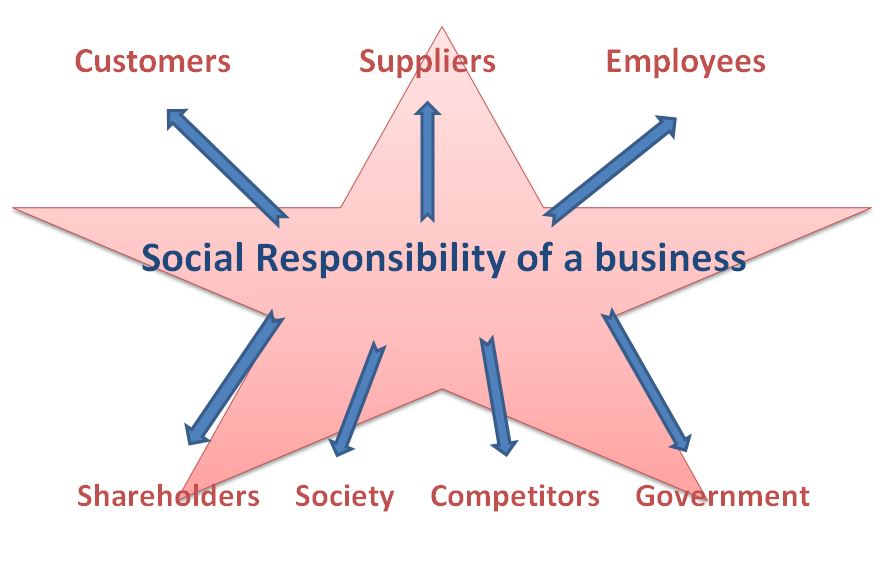Great Social Responsibility of Business STRM075 Assignment Sample
1. Introduction (STRM075 Assignment Sample )
Being one of the largest industries around the world, Indian Clothing/ Textile industry deals with a strong base of manufacturing textile and raw material.
In comparison with the other industries, the entire economy heavily relies on the trade and clothing industry.
It has been seen throughout the past history that the clothing and textile industry are subject to frequent change in its fashion and variety. The present scenario of the clothing industry is characterized by its fast dramatic nature of fashion change which was never the same as before.
The situation of the garment industry has undergone through drastic changes which has taken a new shape and reverse turn since the past few decades. The clothing and textile industry is considered to be the major supporter of the countrywide economies that involves both the large and small scale sectors around the globe.
Manufacturing of clothing is a labor-intensive process that are identified as the requirement of massive raw materials, huge range of product design, rising demand on the quality of the product and high market competitiveness(Adams & Frost, 2008).http://Social Responsibility of Business STRM075 Assignment Sample
2.Industry Analysis and Structure of the Clothing and Textile Industry
Clothing industry is considered to be a highly demanding sector that requires implementation of modern technologies at a very low cost of investment(Lewis & Chen, 2006).http://Social Responsibility of Business STRM075 Assignment Sample
Clothing and Textile industry are known as the prime industries in the world as it contains high potential segments of market. Research and development and Design are the vital competitive factors of the clothing and textile sector.
Several analysis have been made on the clothing industry which characterize it to be a innovate sector, vibrant but a low wage industry, and labor-intensive. The fashion sector is considered to be the modern, dynamic and flexible sector where the manufacturer has to deal with the wide variety of clothing types.
Manufacturers of the clothing industry mostly belong from the developing countries that hold the intense retail market sector by leaving the authority of the market to multinational retailers.
Clothing industry starts with textile sector via fashion industry to retailers of fashion. The supply chain of the clothing industry begins from cotton farming, man-made fibers manufacturing to selling of clothes to the consumers in the retail shops(Herbert & Plates, 2001).http://Social Responsibility of Business STRM075 Assignment Sample
Due to lower capital investment, the entry to this industry has been very simple and easy. The basic sewing machine fabricates the easy entry to the sector which eventually directs the structure of the industry.
Huge number of small factories also prevails within the clothing industry. The production of the clothing industry can be carried out by the sub-contractor and the manufacturer.
Sub- Contractor – Sub-contractors prevails within the clothing industry to produce quality garments at a competitive price.
The prices of the contractor and the subcontractor are competitive are set low to attract the clothing manufacturer.
The power of the sub-contractor is to maintain the low overhead cost, keeping the production continuity, attaining higher levels of productivity, handle the factory management, identifying the profitable opportunities, and ensuring financially secure and reputable customers.
In simple words all the management and administrative functions that takes place within the industry are to be executed by the contractor and the sub-contractor.
Apparel manufacturer – The manufacturing process is undertaken based on three categories of contracting namely Full package program, specialty contractors and cut-make-trim contractors.
The production process is performed with own employees and facilities. The cloths are being produced by the manufacturer through sub-contractor in several ways like cutting, making up, trimming, finishing and quality control(Eva, 2014).http://Social Responsibility of Business STRM075 Assignment Sample
The structure of the clothing industry can be identified with the help of the following diagram-

Fig: Structure of Clothing Industry

Fig: Structure of Textile Business
The major production centers of clothing and textile industry are in China, Russia, USA, Bangladesh, India, Indonesia and Vietnam.
The leading companies of the clothing industry includes Christin Dior, Nike, Gucci, H & M, Zara, Hermes etc. and the leading companies of Textile industry includes Bombay Dyeing, Ashworth, Airiness, Admiral Sportswear, Agile, etc.
The clothing and textile manufacturing industries aims at processing the fiber into fabric and then transform the fabric into textile and clothing items. At the earliest stage of the supply chain, the textile and clothing industry derive adequate amount of raw materials from the Textile mills by way of transforming the polyester and cotton into thread, yarn and fiber.
Through weaving and knitting, the textile mills produce the fabric. The apparel manufacturers then coverts the fabrics into accessories and clothing.
The major clothing products mainly include jackets, caps, shirts, pants, dresses, bags, trousers, fleeces, etc. The market size of the clothing and textile industry is rapidly increasing since the past few years(Gonolek, 2011).http://Social Responsibility of Business STRM075 Assignment Sample
The value of the textile mill market is expected to reach $961.0 billion in 2021 which is nearly a rise of 28.5% since the year 2016 where as the global clothing manufacturing market is expected to reach the value of $992 billion in 2021 indicating the rise of nearly 26% since 2016.http://Social Responsibility of Business STRM075 Assignment Sample
The clothing companies should adopt sophisticated models for understanding the demands of the consumers. The retailers of the clothing industry must identify the trends and styles on several sites of social media.
3. Stages in the clothing and textile industry value chain
The supply chain of clothing and textile industry mainly comprises diversified sectors of raw materials, extrusion and spinning process, sectors for processing, ginning facilities, weaving and knitting factories, and manufacturing that provides wide channels of distribution(Larsen, et al., 2007).http://Social Responsibility of Business STRM075 Assignment Sample
The clothing and textile industry mostly holds the wide range of supply chain in terms of manufacturing of the products, deployed technologies, and use of raw materials. There are several stages which comprise the manufacturing of the clothing and textile industries.
These stages mainly comprise of ginning, spinning, weaving/knitting, processing and clothing manufacturing.
Fiber Production -> Spinning -> Weaving/Knitting -> Processing -> Cloth Manufacturing
Production of fiber is the root stage of garment manufacturing process. Without the fiber production, the stage of spinning will not take place. Textile mills transforms the polyester and cotton into thread, yarn and fiber which further helps in promoting the next stages of manufacturing the cotton and textile.
In the ginning process, the seed cotton is transformed into cotton gin. With the help of the cotton gin, the dirt is removed from the fiber. The process of ginning is essential to capture the cotton.
Through the process of spinning the man made fiber or the cotton are transformed into yarn which are further utilized for the weaving and the knitting. It is considered to be the efficient sector in the textile industry.
The spinning sector mainly holds the large number of small scale and large scale units which is considered to be the essential factors in manufacturing the garments. The stage of spinning plays a vital role which in turn holds competitive advantage across the globe.
The spinning sector is considered to be the most competitive stage depending on certain aspects like the prices of the unit, variety, and total quantity of production(Lewis & Chen, 2006).http://Social Responsibility of Business STRM075 Assignment Sample Open-end spinning are usually done which is a wonderful technique which are easily adapted for artificial fibers.
The stage of weaving and knitting helps in transforming the manmade yarns, cotton into fabrics that are knitted(Speer, 2005).http://Social Responsibility of Business STRM075 Assignment Sample The weaving and the knitting sectors are considered to be the labor intensive and highly fragmented.
This stage of weaving and knitting comes after the spinning phase of manufacturing the clothing and textile. In this stage of manufacturing, three typical technologies are used which are known as technology of handlooms, power looms and knitting machines.
The handloom is generally produced by the skilled and semi skilled labor force for the purpose of catering huge consumption in the local and export markets. Power looms are usually granted due to the increasing demand for low cost, incentives from the government, high volume of production, etc.
Knitting is mostly focused to cater the large volume of local markets. The knitting sector consists of more than 3, 50, 000 enterprises of power loom and 3.6 million handloom enterprises. Therefore, the weaving and knitting stage is one of the most useful and essential aspects of manufacturing the clothing and textiles.
The stage of processing mainly involves dying, printing and preparation of cloth before the process of manufacturing the cloth. More than 20,000 processors are operating all over the world including independent, spinning and weaving sectors.
The final stage in the clothing and textile industry value chain is manufacturing the garments. The garments are manufactured by large number of small-scale units that are categorized as sub-contractors, producer exporters and local manufacturers.
4.The Embroidered & Printed Clothing Company
The Embroidered & Printed Clothing Company is a UK based textile company located at 82 Sweyn Rd, Margate, KENT, United Kingdom. The company is known for supplying the large variety of printed and embroidered uniforms, promotional and work wear clothing(Gonolek, 2011).http://Social Responsibility of Business STRM075 Assignment Sample
All the process of work is done in its unit by way of concentrating on several aspects of manufacturing. The Embroidered & Printed Clothing Company usually works with various types of industries, universities, retails, schools, sports clubs and associations, small and large business. It is an ISO 9001 certified UK based business.
Though the company deals with wide range of clothing products, it also faces several sustainability issues in its operational area. The sustainability issues that are being faced by the company act as a threat which disturbs the smooth functioning of the business.
In the present competitive business environment, it is very much difficult for a business organization to manage everyday business dealings and productivity levels by carrying into shoulder several issues.
5.Sustainability Issues of The Embroidered & Printed Clothing Company
The Embroidered & Printed Clothing Company generally faces several sustainability issues. The issues related to the use of synthetic chemicals in the clothing industry prove to be hazardous for the health of the people who work with the company without using any sort of protection.
The issue of waste generation is mostly the common aspects of the clothing company(Lewis & Chen, 2006).http://Social Responsibility of Business STRM075 Assignment Sample Though the selected company uses the formula of “reduce, re-use and recycle” it can be assumed that it creates almost 10 kilograms of waste for every living being on the planet per year.
Such waste creation not only acts as a threat for building eco-friendly environment rather it is also adding several other problems with it. This company makes use of complex production process of clothing which requires large use of energy.
With the heavy use of energy the company is polluting the surrounding environment to a greater extent which is also categorized to be one of the serious sustainability issues that are prevailing in the company.
The company makes use of slave labor in their production facilities which is mostly common for every clothing organization in UK.
As compared to other industries, The Embroidered & Printed Clothing Company pays very minimum, that is poverty level wages to its workers who are engaged in the production process of clothing. If a worker does not get sufficient wages for their standard living then they fail to accept the working condition of the industry.
As a result of this issue, the workers starts leaving the organization and look for better opportunities. The issue of living wages is found to be growing day by day especially in the manufacturing of the clothing and textile products.
According to the research conducted in the Financial Times, it has been observed that almost every clothing company are providing less than National Minimum Wage to more than 80% of the garment workers (Rusinko, 2007).http://Social Responsibility of Business STRM075 Assignment Sample
This clearly reflects the challenges that the entire industry is going through. Same issue is with the selected company. The company does not make proper use of the recycled materials in its clothing products which act as a threat towards contributing to the sustainable environment.
6.Impact of the Sustainability Issues on the Company’s Performance
Sustainability has turned out to be the matter of concern in the modern age. For clothing and textile industries, it has become the burning issue for large number of companies(Norimaki & Hassie, 2011).http://Social Responsibility of Business STRM075 Assignment Sample
The sustainability issues that are being faced by the selected company tend to create adverse impact on its organizational performance. The generation of large amount of waste pollutes the surrounding business environment which can bring exploitative results for the organization in the coming years.
The Embroidered & Printed Clothing Company is inclined towards using the unsustainable business models for the purpose of meeting the needs of the growing population and rising demands across the globe. The clothing and the textile industry adversely impact the environment at every level along with the life cycle of the product.
Paying less than National Minimum Wages to the garment labors working in The Embroidered & Printed Clothing Company can greatly increase the labor turnover rate during the course of a year.
If the company do not bring appropriate protective measures for the garment workers who are using synthetic chemicals in their clothing products, than it will create serious impact on the human health which may lead to occurrence of several disease thereby affecting the productivity level of the organization as well as destructive for the environment(Allwood, et al., 2006).http://Social Responsibility of Business STRM075 Assignment Sample
Such chemicals that are being used by the company to manufacture products can bring disruptive results for the aquatic-based life and environment as well. Sustainability is considered to the big issues for automotive companies. Many designers do not understand how their designs impact the environment which in turn leads to the serious destruction of the eco-system.
The major environmental impact that are associated with the clothing manufacturing during its product life cycle includes emission of wastewater from dyeing, pollution, production of solid waste, resource depletion from fossil fuels, raw materials and water consumption.
7.Measures to mitigate sustainability issues
The designers of The Embroidered & Printed Clothing Company must develop adequate knowledge regarding the environmental concerns which will help to prevent the contamination and destruction of the eco-system. The Embroidered & Printed Clothing Company can adopt Fast Forward auditing programmed for the purpose of ensuring better compliance in the country.
Proper infrastructure is required to eliminate the slave labor in the UK based clothing industry(Fletcher, 2008).http://Social Responsibility of Business STRM075 Assignment Sample The value of the Modern Slavery Act should be built to protect the rights of the workers to bring radical change in the industry(Gonolek, 2011). The company should focus on recycling waste materials into new clothing to ensure greater sustainability in the environment.
8.Conclusion
Clothing and textile industry contributes to the greater success of the worldwide economy. Presently, the clothing and textile industry is making use of unsustainable business model due to increasing consumption level and growing demands of the middle class population across the world.
There is a need to measure the sustainability of the clothing products by making use of the standardized tools and techniques to reduce the harmful impact on the environment. The UK based clothing companies must take necessary steps to improve the sustainability practices of the environment.
9.Reference
- Fletcher, (2008). Sustainable Fashion & Textiles, Earthscan, London, UK.
- M. Allwood, S. E. Laursen, C. M. de Rodriguez, and N. M. P. Bocken, (2006). Well Dressed? The Present and Future Sustainability of Clothing and Textiles in the United Kingdom, Institute of Manufacturing, University of Cambridge, Cambridge, UK.
- A. Rusinko, (2007). “Green manufacturing: An evaluation of environmentally sustainable manufacturing practices and their impact on competitive outcomes,” IEEE Transactions on Engineering Management, vol. 54, no. 3, pp. 445–454.
- D. Lewis and C. Chen, (2006). “The life of a piece of cloth: developing garments into a sustainable service system,” International Journal of Environmental, Cultural, Economic and Social Sustainability, vol. 2, no. 1, pp. 197–207.
- Goworek, (2011)“Social and environmental sustainability in the clothing industry: a case study of a fair trade retailer,” Social Responsibility Journal, vol. 7, no. 1, pp. 74–86.
- Speer, 2005. “Organic cotton: where, why and how. Appare,” Journal of Sustainable Textiles Materials, vol. 46, no. 9, pp. 29–34.
- E. Laursen, J. Hansen, H. H. Knudsen, H. Wenzel, H. F. Larsen, and F. M. Kristensen, 2007. EDIPTEX: Environmental Assessment of Textiles, Danish Environmental Protection Agency, Copenhagen, Denmark.
- A. Adams and G. R. Frost, 2008. “Integrating sustainability reporting into management practices,” Accounting Forum, vol. 32, no. 4, pp. 288–302.
- Niinimäki and L. Hassi, 2011. “Emerging design strategies in sustainable production and consumption of textiles and clothing,” Journal of Cleaner Production, vol. 19, no. 16, pp. 1876–1883.
Eva, S.I.(2014). Structure of Apparel Industry. Retrieved from https://textilelearner.blogspot.com/2014/10/structure-of-garment-industry.html
Herbert, R. & Plattus, R. (2001). Chapter 87- Clothing and Finished Textile Products. Retrieved from http://www.ilocis.org/documents/chpt87e.htm
Know more about UniqueSubmission’s other writing services:
Assignment Writing Help
Essay Writing Help
Dissertation Writing Help
Case Studies Writing Help
MYOB Perdisco Assignment Help
Presentation Assignment Help
Proofreading & Editing Help


